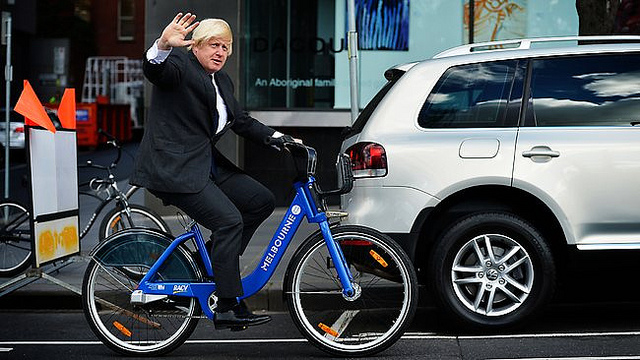The EU referendum saw the return of class-prediction voting (with a vengeance)
The repercussions of the UK’s decision to abandon its membership of the European Union keep coming, with Boris Johnson seemingly heading for Downing Street. Here, Alun Wyburn-Powell picks over the result, focusing on democratic engagement, polling miscalculations, and the return of class-prediction voting.
The UK has voted to leave the EU by a margin of 52% to 48% – a close, but decisive, result. Scotland and Northern Ireland voted to remain in the EU, while England and Wales voted to leave – continuing the pattern of Scotland diverging from English politics, while Wales and England converge.
As an exercise in democracy, it looks like a straightforward success. The turnout was a healthy 72%, higher than any general election since 1992. Anecdotal evidence suggests a very high turnout from estates which generally have a low response rate at general elections. The opposing sides put forward their cases loudly. Allegations of lying were made in clear and unequivocal language. Voters could choose whether or not to heed them. Every vote counted towards a national total. The process was simple and only 0.08% of ballot papers were rejected.
There was a binary choice on the ballot paper. Nonetheless, some people did not turn out to vote. Some left-wing voters announced that they were voting tactically and supported Leave to try and get Jeremy Corbyn into Number 10 via some imagined and convoluted route. Other usually non-voting Leave supporters expressed surprise that their vote counted and something actually changed as a result. But then, this is how democracy is supposed to work. Few people have genuine cause for complaint, (apart from people prevented from voting by the heavy rain), although many will not be happy with the situation which will evolve.
The pollsters struggled to predict the result, although they gauged that it was going to be close – not a brilliant insight for the money. History, too, did not provide a useful guide. In most referenda a late swing towards the status quo usually delivers a no-change result. This was not a no-change result. It has cost David Cameron his premiership and much of his positive reputation. (He could have let others lead the Remain campaign, as did Harold Wilson in the 1975 referendum.) It cost Labour MP, and Remain campaigner, Jo Cox her life. It has probably cost the UK its membership of the EU, unless Boris Johnson manages to take over the Conservative Party leadership and hold a second referendum which reverses the result. A new deal with the EU or several months of economic misery might just swing 2% of voters in a second referendum – an unlikely, but not impossible scenario.
The UK had largely shed its class-based voting pattern which persisted until the 1980s, but the referendum saw the return of class-prediction of voting with a vengeance. According to Lord Ashcroft’s poll of 12,000 voters, a significant majority of Leave voters see multiculturalism, green issues, feminism, globalisation, the internet and immigration as ‘forces for ill’, while Remain voters regard them as the exact opposite. This is really the crunch dividing line which has emerged. Support for Remain declined with increasing age and reducing qualifications, but men and women divided equally. UKIP, the Greens and the Lib Dems largely secured their voters’ support for their party’s stance, while Labour and Conservative voters went their own ways.
The referendum may well see the less-than-dramatic change from one old-Etonian, Oxbridge-educated wealthy, white, male, Conservative prime minister to another. Despite this, the whole world may never be the same again.
—
This post represents the views of the author, and not those of Democratic Audit or the LSE. Please read our comments policy before posting.
—
 Dr Alun Wyburn-Powell is the author of Political Wings, the biography of William Wedgwood Benn (Pen & Sword) and a study of political defections, Defectors and the Liberal Party 1910 to 2010 (Manchester University Press). He can be found on Twitter @liberalhistory.
Dr Alun Wyburn-Powell is the author of Political Wings, the biography of William Wedgwood Benn (Pen & Sword) and a study of political defections, Defectors and the Liberal Party 1910 to 2010 (Manchester University Press). He can be found on Twitter @liberalhistory.






 Democratic Audit's core funding is provided by the Joseph Rowntree Charitable Trust. Additional funding is provided by the London School of Economics.
Democratic Audit's core funding is provided by the Joseph Rowntree Charitable Trust. Additional funding is provided by the London School of Economics.
The #EUreferendum saw the return of class-prediction #voting (with a vengeance) https://t.co/ji4yk7Z4N0
The EU referendum saw the return of class-prediction voting (with a vengeance) https://t.co/1THyI0SdAf
The EU referendum saw the return of class-prediction voting (with a vengeance) https://t.co/IZG7AvptEp
The EU referendum saw the return of class-prediction voting (with a vengeance) https://t.co/qU8Cdcxy15
The #EUref saw the return of class-prediction voting (with a vengeance) https://t.co/FLBpzLlmFT
The EU referendum saw the return of class-prediction voting (with a vengeance) https://t.co/nQtVmNh2pn
The EU referendum saw the return of class-prediction voting (with a vengeance) https://t.co/ILQwwBL22n https://t.co/UJHSj2oJJP